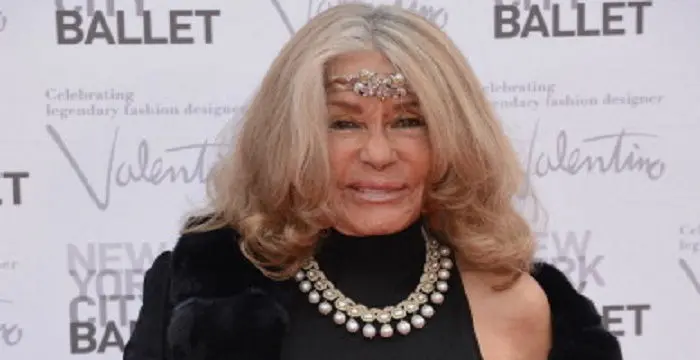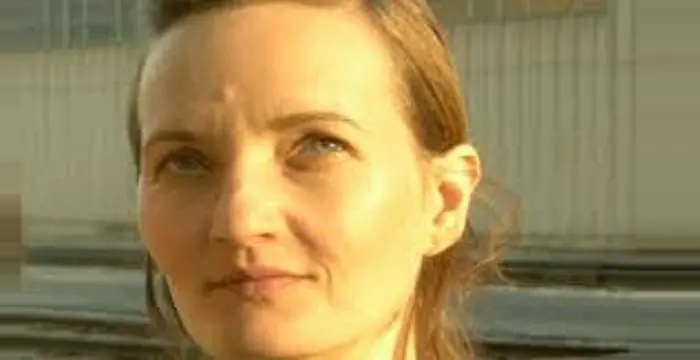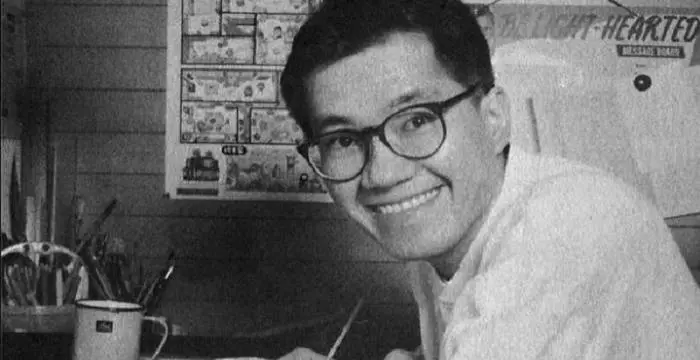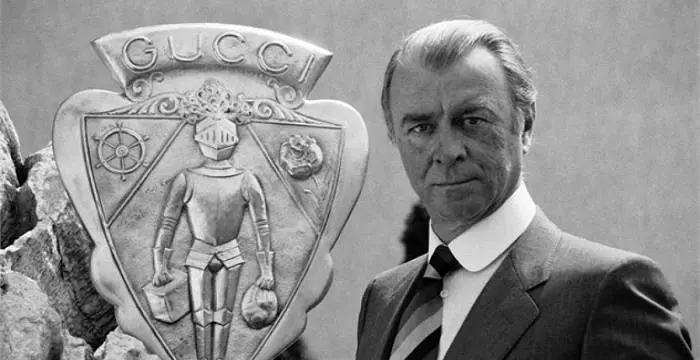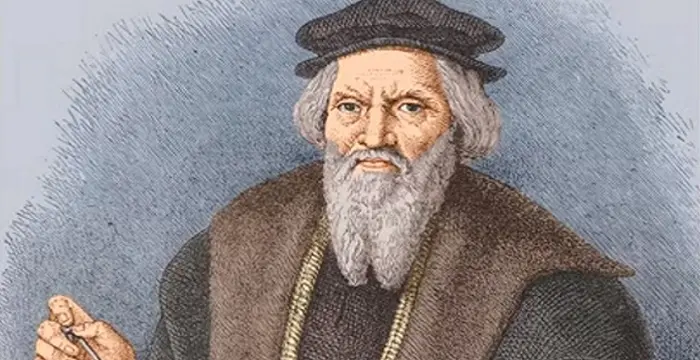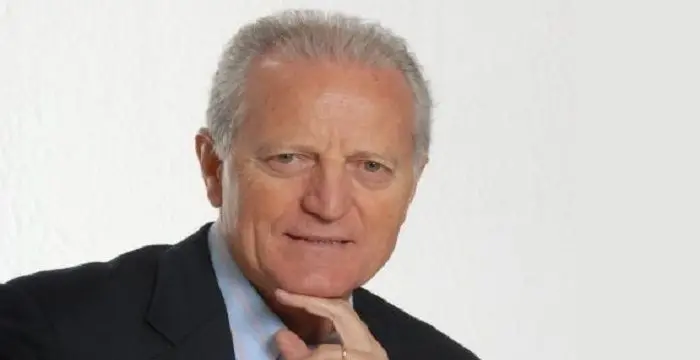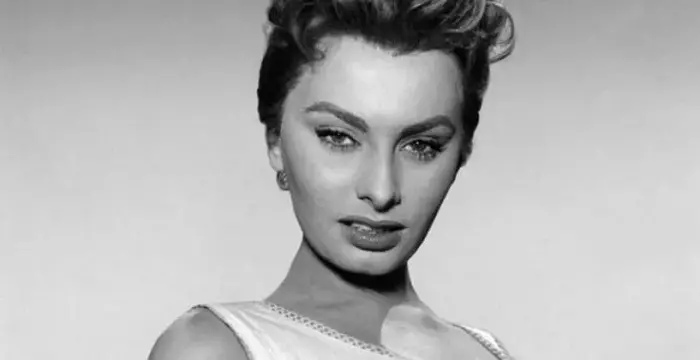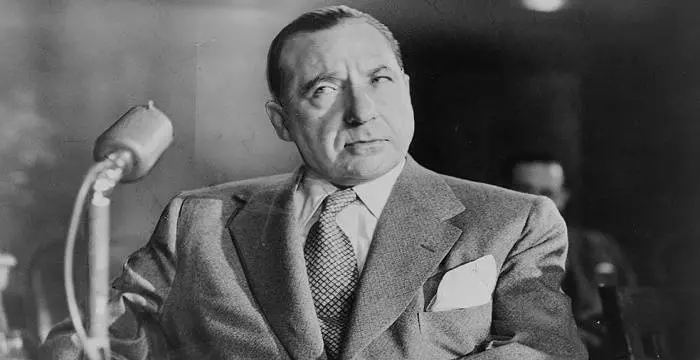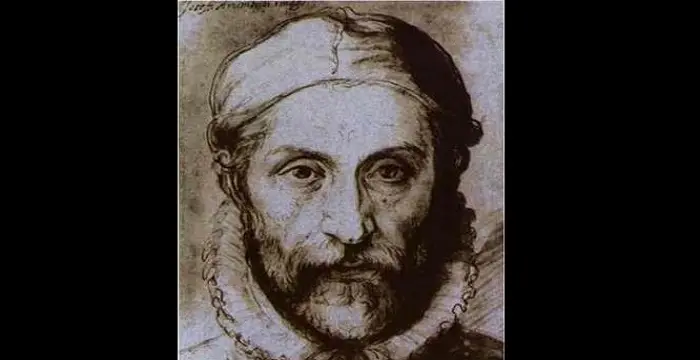
Giuseppe Arcimboldo - Artists, Career and Family
Giuseppe Arcimboldo's Personal Details
Giuseppe Arcimboldo was a great Italian painter
| Information | Detail |
|---|---|
| Birthday | 1527 |
| Died on | July 11, 1593 |
| Nationality | Italian |
| Famous | Artists & Painters, Artists, Miscellaneous |
| Birth Place | Milan, Italy |
| Gender | Male |
| Father | Biagio Arcimboldo |
| Born in | Milan, Italy |
| Famous as | Painter |
| Died at Age | 66 |
// Famous Miscellaneous
Jason Simpson
Jason Simpson is the son of former NFL running back, broadcaster and actor O. J. Simpson. Check out this biography to know about his childhood, family, life, and little known facts about him.
Melissa Brim
Melissa Brim is the ex-girlfriend of former professional boxer Floyd Mayweather Jr. Check out this biography to know about her birthday, childhood, family life, achievements and fun facts about her.
Joyce Meyer
Joyce Meyer is a Christian author and speaker. This biography provides detailed information about her childhood, life, achievements, works & timeline
Who is Giuseppe Arcimboldo?
The Italian painter Giuseppe Arcimboldo was among those who made their mark in the world of arts with their superlative skills. A man of surreal wit and visual humour, he carved the way for ‘mannerists’ during the era of ‘Mannerism’, which significantly emphasised on the bond between man and nature. With dexterous art skills he managed to make intricate paintings using fruits, vegetables, inanimate objects and even fishes as the portrait subject. Unfortunately his art work was misinterpreted after his death. Many artists, who came later, misunderstood Arcimboldo’s intellectual art for absurd paintings. It has been argued that he was so ahead of his time, that his art transcended the imagination of many. However, with the coming of the 19thcentury, his work came to the forefront and was appreciated by many an artist. His paintings were deemed unique and intriguing. His paintings defied the trends of the 16thcentury; today he is celebrated as one of the original ‘Old Masters’ of the ‘Mannerism Era.’ Though many of his paintings have strangely disappeared, yet the brilliance behind a few of his classics is enough to impress generations to come.
// Famous Artists & Painters
Micheline Roquebrune
Micheline Roquebrune is a petite Moroccan-French painter best known as the third wife the legendary Scottish actor Sir Sean Connery. Check out this biography to know about her birthday, childhood, family life, achievements and fun facts about her.
Yvonne McGuinness
Yvonne McGuinness is an Irish multimedia artist. This biography profiles her childhood, family, personal life, career, etc.
Akira Toriyama
Akira Toriyama is a Japanese manga artist. This biography profiles his childhood, family, personal life, achievements, etc.
Childhood & Early Life
Giuseppe Arcimboldo was born at Milan in 1527 to Biagio, who was a painter for the office of ‘Fabbrica’ in the ‘Duomo.’ Walking in the footsteps of his father, Arcimboldo took a deep interest in painting from a very young age.
Precise details of his early art training are unknown and have not been documented, but historians suggestthat as a boy he was skilful and talented, making him a versatile artist. He could paint a number of religious art forms, including stained glass art and tapestry designs as well as fresco art.
From a Local Painter to a Court Portraitist
Giuseppe Arcimboldo began his career in 1549, when he was commissioned to do stained glass window designs at the ‘Duomo’. In 1556 he worked with the ever talented Giuseppe Meda on frescoes at the famous Cathedral of Monza. He also painted a cartoon of a large tapestry of the ‘Dormition of the Virgin Mary’ that is still hung at the ‘Como Cathedral’.
Possessing a talent that was not meant for secrecy, he was summoned by Ferdinand I in 1562 at the Habsburg court, and became the court portraitist.
It wasn’t long before he became a court painter for Maximilian II and his son Rudolf II at the court of Prague. He was soon recognised as an artist with ingenious pun reflections in his paintings and portraits.
An Integral Member of the Royal Hapsburg Family
Giuseppe Arcimboldo also served as a “party planner” at the court of Prague; historical records suggest that his duty as a planner was to organize lavish ‘theme balls’ at which the wealthiest of the lot got portraits of theirs painted by Arcimboldo. Many of his admirers were thrilled by his innate panache.
Most of his remaining works are of collected objects, which have been assembled to resemble people. He used fruits, flowers, vegetables, fish, and books, and other just objects arranged in such a way so as to resemble a person.
He painted ‘The Four Seasons’ which is a series of portraits that constructed faces out of blooming blossoms, swollen gourds, withered roots, and ripe grain. In 1570, when Augustus, Elector of Saxony, visited Vienna, he was stoked on seeing Arcimboldo's work and ordered a copy of ‘The Four Seasons’.
In 1590, he painted a portrait of hisroyal patron, the Holy Roman Emperor Rudolf II, as a heap of fruits and vegetables, with pea pods for eyelids and a gourd for a forehead. Rudolf had a good sense of humour as he had probably grown accustomed to the artist’s visual wit.
He was also an established costume designer and interior designer of his time. He possessed a secret love for writing poetry as documented by one of his close friends.
There are no awards linked to his name, with very little of his work remaining and no historical references, even if he was appreciated or certified in any form, hardly any information could be gathered.
Yet, the fact that he was appointed as a ‘court portraitist’ and ‘decorator’ along with being a ‘party and costume planner’ throws substantial light upon the fact that his work was appreciated even though it was considered rather queer.
Since he lived at a time when changes were appreciated, his novel ideas were looked upon as sheer brilliance and thus many emperors took to his skill and commissioned portraits of themselves and also ordered copies of his finest works.
He also had a great hand in the décor of several cathedrals that continues to bring glory to the Renaissance period even today.
Major Works
Putting his creativity to its best use, Giuseppe Arcimboldo painted outstanding portraits with deliberate irony. Being the only artist of his kind with unconventional artistry, many of his paintings have been admired and appreciated for their uniqueness.
A classic example is his famous ‘Man in the Vegetables’.At first sight it looks like a bowl of fruits and vegetables, but when you turn it upside down, the bowl becomes a hat over the face of a man with an onion for a cheek and mushrooms for lips. It’s remarkable.
Another one of his most acclaimedworks is not merely amazing but was also highly controversial in his time. It’s an oil on canvas called ‘The Librarian’ painted in 1566, which features a human being fashioned from books, and other objects associated with books.It is widely believed that his intent was to make a stinging commentary on the wealthy elite.
During his time, only the extremely rich could afford to buy and collect books. But often such people had more wealth than wit. Many only collected books as a status possessions, even though they could barely read or understand the content of the books they owned.
‘The Jurist’ painted in 1566 is a depiction of Maximilian’s duplicitous vice-chancellor, Ulrich Zasius. Instead of painting a radiant and handsome face, he painted a two-faced Zasius of mud-coloured stale poultry and fecund fish, tactfully displaying his utter disdain for Zasius.
‘The Four Elements’ is a series consisting of four outstanding portraits made up of elegant animals and man-made luxuries portraying the four dominant elements of the earth- ‘Air’ is depicted as a flighty flock of birds, including an owl, a rooster, a parrot, and a peacock. ‘Water’, calm and serene, holds the aquatic life of fish, sharks, squids and sea turtles. ‘Earth’ or ‘Land’ assists the livelihood of mammals such as elephants, deer, wildcats, a wild boar, rabbit, and lamb. Lastly, ‘Fire’ ignites the darkness with sparks, flames, candles, lamps, and glistening gold and guns.
When the Swedish army invaded Prague in 1648, during the Thirty Years’ War, many of Arcimboldo's paintings were taken from Rudolf II's collection. Leaving the world with little knowledge of the entirety of his masterpieces.
Personal Life & Legacy
Not much has been noted about Giuseppe Arcimboldo’s personal life, except for the fact that his father was an artist. Information pertaining to his children or a marriage has not been recorded and hence the world remains oblivious to the life he had beyond his world or artistry, if he did have one.
However, due to his strange ways and artistic renditions of the human figure, people have debated for centuries whether or not hispaintings are the work of insanity.
After retiring from the Prague service, Giuseppe Arcimboldo retired to Milan, where he died on 11 July 1593 at the age of 66.
He was considered psychotic by several artists of his time and his successors.It is difficult to defend his inexplicable drawings. Only the fact that people in general, during the Renaissance era in which he lived, were fascinated with riddles, puzzles, and everythingoutlandish, brings respite to such speculations. If this was to be considered true, then Arcimboldo’s strange depictions were simply catering to the tastes of his time.
He was almost completely lost to history untilhis works were recently rediscovered at the beginning of the 20th century by the ‘Surrealist Painters’, including Salvador Dali, who was profoundly influenced by the artist’s unique style.
His portraits can be found today in several of the world's best art museums, including the ‘Louvre Paris’, the ‘Uffizi Florence’, ‘Kunsthistorisches Museum’ at Vienna, the ‘Pinakothek’ in Munich, the ‘Habsburg SchlossAmbras’ in Innsbruck, and numerous other museums in Sweden and Italy.
In America, his paintings hang in collections at the ‘Denver Art Museum’, Colorado, the ‘Menil Foundation in Houston’ in Texas, and ‘The Wadsworth Atheneum’ in Hartford.
Trivia
The Habsburg emperor was so pleased with Giuseppe Arcimboldo’s works that he made him a ‘Count Palatine’ in 1592 after returning from Prague.
// Famous Artists
Susan Mikula
Susan Mikula is an American artist and photographer. Check out this biography to know about her childhood, family life, achievements and fun factsabout her life.
Akira Toriyama
Akira Toriyama is a Japanese manga artist. This biography profiles his childhood, family, personal life, achievements, etc.
Bob Ross
Bob Ross was a celebrated, creative American painter and an art instructor. Check out this biography to know about his birthday, childhood, family life, achievements and fun facts about him.
Giuseppe Arcimboldo biography timelines
- // 1527Giuseppe Arcimboldo was born at Milan in 1527 to Biagio, who was a painter for the office of ‘Fabbrica’ in the ‘Duomo.’ Walking in the footsteps of his father, Arcimboldo took a deep interest in painting from a very young age.
- // 1549Giuseppe Arcimboldo began his career in 1549, when he was commissioned to do stained glass window designs at the ‘Duomo’. In 1556 he worked with the ever talented Giuseppe Meda on frescoes at the famous Cathedral of Monza. He also painted a cartoon of a large tapestry of the ‘Dormition of the Virgin Mary’ that is still hung at the ‘Como Cathedral’.
- // 1562Possessing a talent that was not meant for secrecy, he was summoned by Ferdinand I in 1562 at the Habsburg court, and became the court portraitist.
- // 1566Another one of his most acclaimedworks is not merely amazing but was also highly controversial in his time. It’s an oil on canvas called ‘The Librarian’ painted in 1566, which features a human being fashioned from books, and other objects associated with books.It is widely believed that his intent was to make a stinging commentary on the wealthy elite.
- // 1566‘The Jurist’ painted in 1566 is a depiction of Maximilian’s duplicitous vice-chancellor, Ulrich Zasius. Instead of painting a radiant and handsome face, he painted a two-faced Zasius of mud-coloured stale poultry and fecund fish, tactfully displaying his utter disdain for Zasius.
- // 1570He painted ‘The Four Seasons’ which is a series of portraits that constructed faces out of blooming blossoms, swollen gourds, withered roots, and ripe grain. In 1570, when Augustus, Elector of Saxony, visited Vienna, he was stoked on seeing Arcimboldo's work and ordered a copy of ‘The Four Seasons’.
- // 1590In 1590, he painted a portrait of hisroyal patron, the Holy Roman Emperor Rudolf II, as a heap of fruits and vegetables, with pea pods for eyelids and a gourd for a forehead. Rudolf had a good sense of humour as he had probably grown accustomed to the artist’s visual wit.
- // 11th Jul 1593After retiring from the Prague service, Giuseppe Arcimboldo retired to Milan, where he died on 11 July 1593 at the age of 66.
// Famous Italian peoples
Pietro Boselli
Pietro Boselli is an Italian model, engineer, teacher, and fitness athlete who became famous as the ‘world’s sexiest math teacher’. Check out this biography to know about his birthday, childhood, family life, achievements and fun facts about him.
Guccio Gucci
Guccio Gucci was a famous fashion designer from Florence, Italy, and the founder of the world-renowned fashion brand ‘Gucci.’ Check out this biography to know about his childhood, family, personal life, career, etc.
John Cabot
John Cabot was an Italian navigator and explorer who was the first European to discover the coast of North America. Check out this biography to know about his childhood, life, and achievements.
Santo Versace
Santo Domenico Versace is an Italian businessman and politician. Check out this biography to know about his birthday, childhood, family life, achievements, and fun facts about him.
Sophia Loren
Sophia Loren is an Italian film star known for her charm, elegance and beauty. This biography of Sophia Loren provides detailed information about her childhood, life, achievements, works & timeline
Frank Costello
Frank Costello was an Italian-American gangster and crime boss. This biography provides detailed information about his childhood, family, criminal activities, etc.
Giuseppe Arcimboldo's FAQ
When was Giuseppe Arcimboldo died?
Giuseppe Arcimboldo was died at 1593-07-11
Where was Giuseppe Arcimboldo died?
Giuseppe Arcimboldo was died in Milan, Italy
Which age was Giuseppe Arcimboldo died?
Giuseppe Arcimboldo was died at age 66
Where is Giuseppe Arcimboldo's birth place?
Giuseppe Arcimboldo was born in Milan, Italy
What is Giuseppe Arcimboldo nationalities?
Giuseppe Arcimboldo's nationalities is Italian
Who is Giuseppe Arcimboldo's father?
Giuseppe Arcimboldo's father is Biagio Arcimboldo
How famous is Giuseppe Arcimboldo?
Giuseppe Arcimboldo is famouse as Painter



